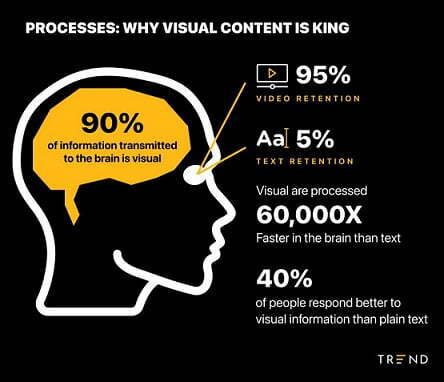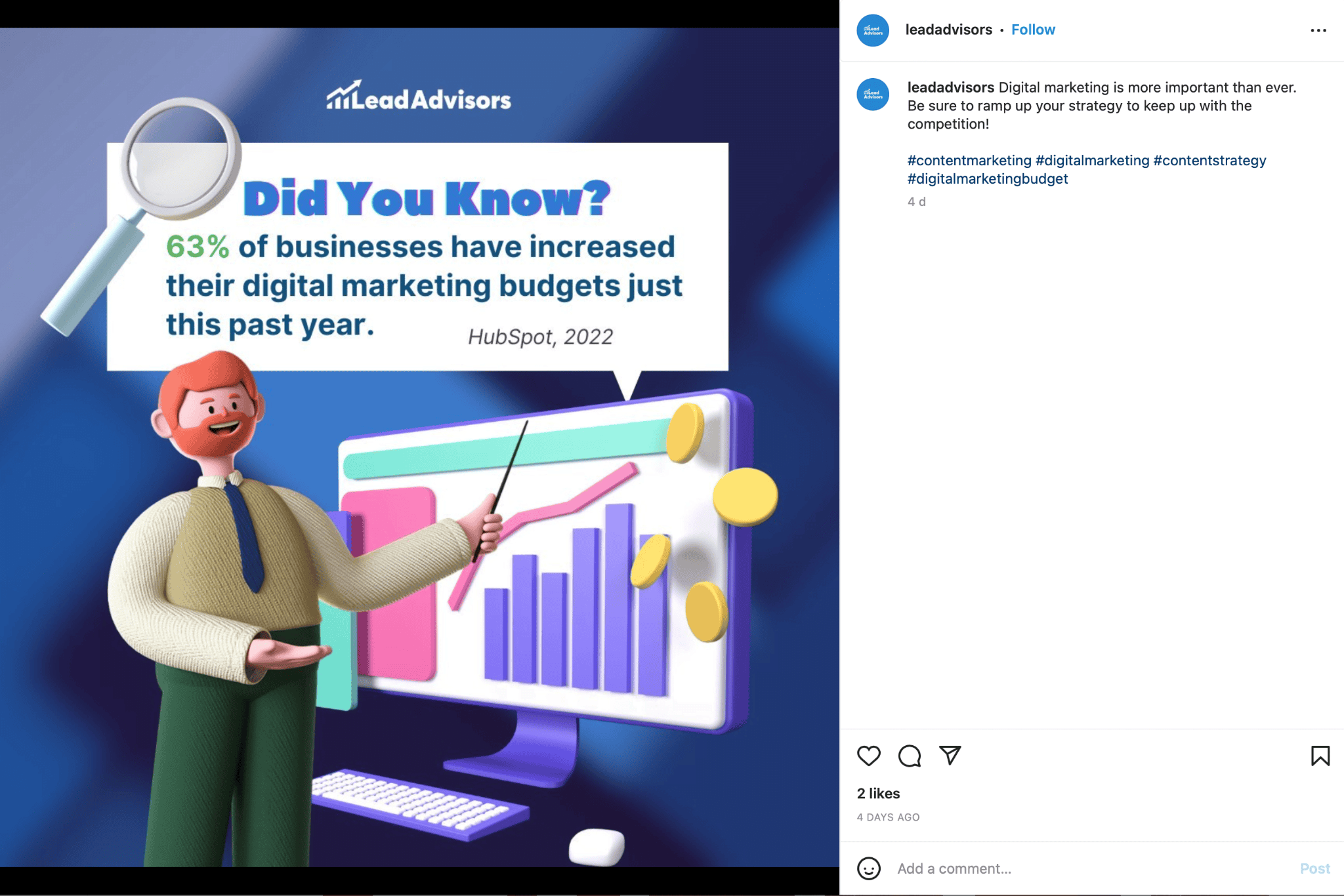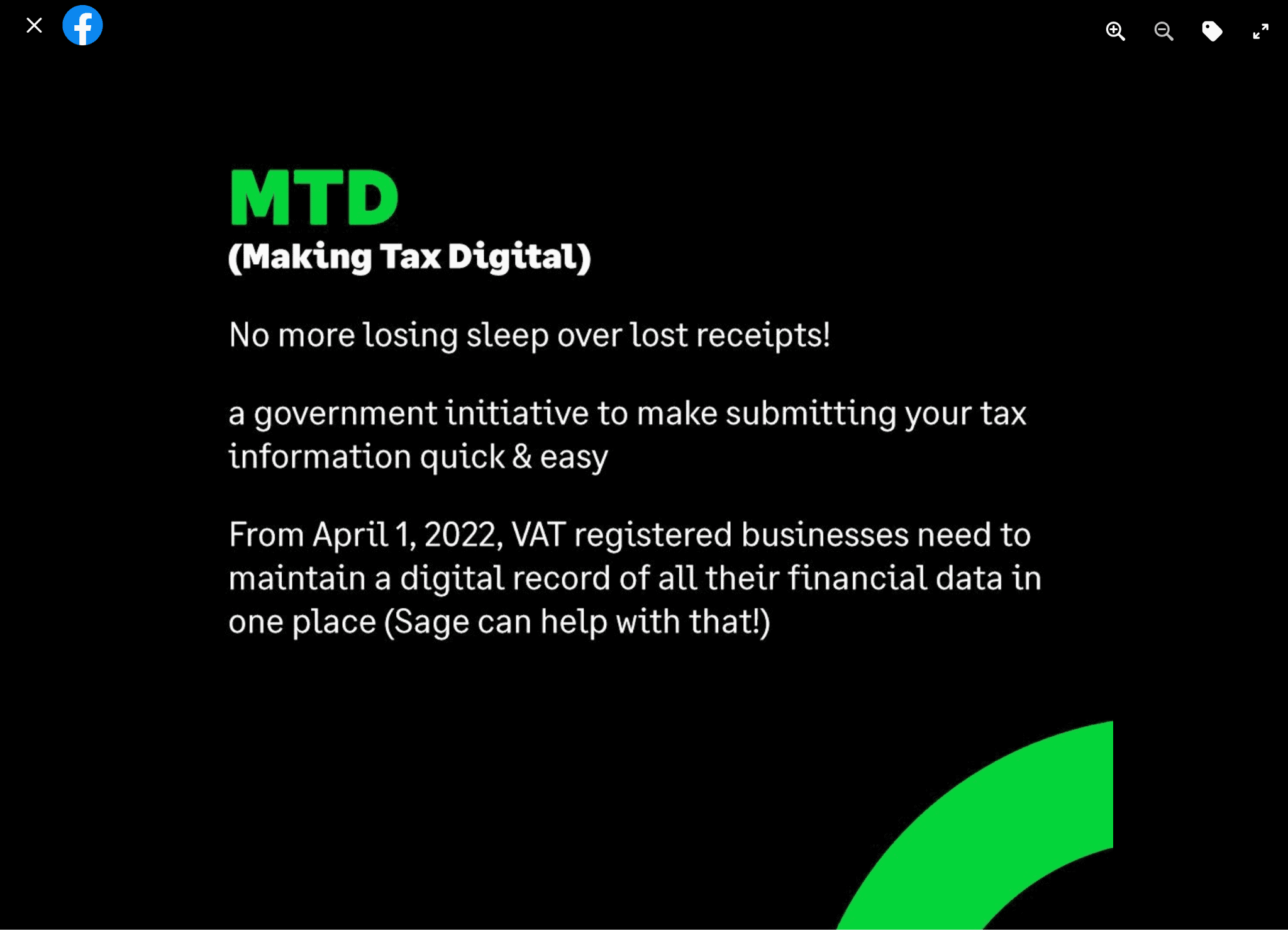Social media is proven to be a great way to promote your brand. In fact, 78% of consumers are more willing to buy a product or service after having a positive experience with a brand on social media.
But there are many aspects you could spend your marketing dollars on—and the last thing you want to do is spend them on the wrong tactics.
Whether you’re an old hand at social media marketing or you’re launching a campaign for the first time, you’ll need to be able to set a realistic budget that minimizes costs while maximizing results and ROI.
So, how do you allocate a budget for social media marketing? This article will explore what your budget should cover and the most crucial things to consider to make sure your social media marketing is a success.
What is social media marketing?
Social media marketing is a method of digital marketing in which a business or brand specifically uses social media platforms to promote products or services and engage with followers.
It includes content creation, paid ads, social listening, and influencer partnerships and is typically used alongside other marketing methods like SEO and online advertising.
Why do I need a social media marketing budget?
Spoiler alert: social media is popular. The number of people using social media worldwide is set to increase to almost 6 billion in 2027.
That’s why marketing on social media platforms is worthwhile—and why you need a decent budget to engage all those potential customers.
Creating a budget forces you to sit down and think carefully about how much you’ll spend on social media during a specific time period and to justify why you’re doing so. It’s a way of spotting areas where costs could be trimmed and measuring return on investment.

Free to use image sourced from Unsplash
Marketers often find it difficult to prove the true value of social media. Although this has become somewhat easier in recent years, it’s still a challenge.
Your budget helps you keep track of costs and ROI calculations, so you can make a case for future investments in this area.
What is a good budget for social media marketing?
Well, there’s no easy answer to this question because there are no set rules for how much you should spend on social media marketing.
Your budget will depend on many factors—one of the major ones being the overall marketing budget that your company has in place and what percentage you can devote to social media.
In one recent survey, US-based respondents said that 14.5% of their marketing budget was devoted to social media marketing. But budgets also vary widely by industry and between B2C and B2B companies.
To find the right amount for you, you’ll need to consider your current marketing spend, your likely expenditure, and the expected ROI.
What does a social media budget cover?
Again, this will depend on your business and what you want to achieve via social media. It can cover everything from hiring content creators to buying specific software tools and paid-for ads.
Content creation
The content you post on social media is crucial for engagement, so you may find that you will spend about half of your campaign budget on this aspect alone. You’ll either need a team of staff to produce content or you might hire freelance content creators or digital strategy agencies to do it on your behalf.

Image Sourced from trend.io
As well as copywriting and editing, it’s a good idea to use images to enliven your posts. So as part of your budget, factor in the cost of commissioning photography and video (including models, actors, and production costs), plus graphic design.
Software/tools
If you’re creating and managing all of your content in-house, you’ll need to buy or subscribe to software tools for maximum efficiency. This covers design and editing (including video creation), collaboration and project management, and social media management, such as scheduling.
You’ll also need tools to help with social advertising, monitoring, and analytics as well as specific customer service tools for social media. Some of these tools are available as free versions but they’ll only have basic features.
Paid ads
Although you may start off by relying on organic social media traffic, at some point, you’ll want to try using paid ads on different platforms. You don’t have to spend a fortune, but the more you spend, the more advertising options you’ll access and the more exposure you’ll get.
You can choose from several online calculators to get an idea of the costs and ROI of paid social media advertising.
Influencer marketing
If you’re working with social media influencers, you’ll need to factor their costs into your marketing budget. As well as paying the content creators themselves—or paying commission to affiliate marketers—you might also pay to boost influencer posts to expand the reach of this content.
In-house and outsourced expenses
It’s likely that your business will have a mixture of in-house and outsourced expenses relating to social media, so it’s worth listing these separately in your budget.
There will be YC payroll and administration expenses for your own team, plus any fees for services performed by third parties, such as consultants or copywriting agencies.

Image sourced from Instagram.com
9 Considerations when planning your budget
Here are some of the factors you need to take into account before setting a definitive budget.
What are your goals?
The first step is to decide what you want to achieve through social media and how much it’ll cost you to get there. This includes immediate and long-term goals specifically linked to measurable results so that you can track the value and ROI of your social media spending.
Goals might include generating more engagement, reaching new audiences, and strengthening your social community. But you need to drill down into the numbers. Just “getting more leads” isn’t concrete enough—how many leads do you want to generate and in what timeframe?
What’s your current spend?
It also makes sense to consider what you’re spending on social media already and whether it’s over or under the current budget.
By analyzing your spend from previous years, quarters, or months, you’ll be able to see where you need more resources and where you might be able to trim costs. For example, could you have attracted bigger audiences by spending more on video content?
Once you’ve set goals and evaluated the current situation, you’re in a better position to build out your social media strategy.
How often will you post content—and who will create it?
Think about how much content you need to post to satisfy your followers and how that impacts your budget.
If you go for a high volume of daily posts, you’ll have to spend more than if you only post a few times a week. Remember to factor in costs for any contests and giveaways.
Paying a third party to create content for you will likely cost more than doing it in-house. One way to keep costs down is to encourage user-generated content, which helps to build a brand community.
Another idea is to repurpose your existing content. For example, if you’ve produced a guide on MTD accounting like Sage has, you could rejig this into an infographic or carousel.
Content like this is visually appealing, practical, and helpful to followers as it breaks down a potentially complicated topic. As the Making Tax Digital deadline approaches in the UK, you could ramp up this content, sharing valuable and timely posts that are more likely to be shared.

Screenshot taken from Facebook.com
Will you use influencers and affiliates?
Forming partnerships with influencers and affiliate networks will boost your presence on social media and attract new customers—it certainly did for fintech company Klarna. They attracted 18,000 new followers when they began working with hip hop star Snoop Dogg.
But influencer marketing is another expense to consider. Think about what you want to achieve—do you need celebrity endorsement like Klarna or would a micro-influencer do the job?
Although influencer costs vary widely, the industry standard is $100 per 10,000 followers. The cost of these partnerships may also depend on content type and the platform.

Screenshot taken from youtube.com
Will you use paid ads or rely on organic traffic?
If you’re a small business, you might stick to organic content to engage with your followers. And there’s a lot of mileage to be had from this option, as long as you work hard to post the kind of content people enjoy.
But, if your budget will allow for it, paid advertising can definitely help you gain more followers and turn them into paying customers. It’s also a great exercise for brand awareness.
You’ll probably need to focus your efforts on one particular channel, rather than spending big across all of them. Remember, clicks cost money even if the user doesn’t convert. The average cost-per-click for Facebook in December 2022 is $1.06.
Which channels will you focus on?
Following on from the previous section, you need to find out which channels are most suitable for your social media marketing. It’s a good idea to experiment with different platforms, posting times, and types of content. You can also use A/B testing to try different images or video lengths.
This will depend on your brand—do you want to reach business professionals through LinkedIn or target Gen Z with Snapchat or TikTok? The minimum investment for a CPM-focused ad on TikTok is around $500.
Facebook currently has more than 2.9 billion monthly active users, so it’s a reliable starting point. Since the Meta platform incorporates Facebook and Instagram, you can manage both sets of ads using the Meta Business Suite.

Screenshot taken from facebook.com
What social media tools do you need?
When you’re producing and managing content in-house, it’s best to automate as much of the process as possible to save time and maximize efficiency. Social media tools also enhance creativity and generate valuable data for understanding your users.
That said, you need to factor in the cost of these tools. As we mentioned before, some will be free to use, but you’ll want at least some paid versions to make the most of their capabilities.
Apart from cost, there are many considerations in choosing the right tools, such as ease of use and number of features. Take advantage of any demos or free trials offered by the vendor, so that your team can familiarize themselves with the tools and make sure they’ll suit your way of working.
What about expanding your team?
Even for a relatively small business, it takes a lot of time and effort to create and schedule content, respond to followers, and stay abreast of industry trends. Social media marketers also build your strategy, use social listening to gain insight into your audience, and provide social customer service.
If you’re struggling to keep on top of engagement opportunities, you might consider using part of the budget to expand your social media team. Plus, you may want to invest in training so that all members of the team are fully aware of and trained on all the features of social platforms and tools.
How will you track your budget—and measure success?
Aside from planning the budget itself, it’s important to decide how you’ll track your budget. Some small businesses might use a spreadsheet, but it’s much better to use dedicated tools such as accounting software for small business finances to streamline the process and avoid errors.
You also need to consider the type of budget. The traditional method is to allocate a set portion to each category—you can’t move funds between categories, even when the money is used up in one of them.
However, a flexible budget lets you do just that. Meanwhile, a zero budget sees every category start with zero. You then increase each amount, justifying the cost every time.

Free to use image sourced from Unsplash
Finally, at the end of each budgeting period, it’s essential to evaluate your results. This way, you can check that you’ve been spending in the right areas.
You should continually track social metrics and adjust spending accordingly. The figures will be critical in setting your budget for the next period.
Budget For Social Media Marketing
Setting a budget for social media marketing helps you organize your team and strategy so you manage your marketing spending carefully. The budget determines the platforms you advertise on, the tools you use, and whether or not you tap into influencer marketing.
Make sure to consider all these factors when setting your budget and keep measuring those metrics to make sure you’re meeting your goals. With the right funding, your social media marketers can experiment with different types of content, expand advertising across platforms, and interact with followers for maximum engagement.

